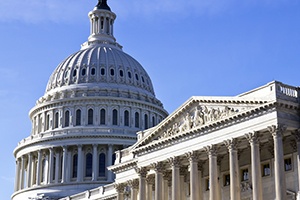 As I have been saying, things are pretty good, economically speaking, as we move into the new year. But there is one significant risk that we need to watch. I’m speaking of the pending deadline (midnight today) when funding for the government runs out. At that time, the U.S. debt ceiling extension ends, the government cannot borrow any more money, and—if Congress (including both Republicans and Democrats) can’t come to some sort of an agreement—the government shuts down.
As I have been saying, things are pretty good, economically speaking, as we move into the new year. But there is one significant risk that we need to watch. I’m speaking of the pending deadline (midnight today) when funding for the government runs out. At that time, the U.S. debt ceiling extension ends, the government cannot borrow any more money, and—if Congress (including both Republicans and Democrats) can’t come to some sort of an agreement—the government shuts down.
This has been pending for a while, of course. We last talked about the risks in Washington, in fact, just after Thanksgiving. I have been keeping an eye on the most recent round, but it seemed like a deal would be cut and the problem averted. Now, however, the situation is worse.
A difficult path
A deal is certainly still possible, and the House has actually passed an extension. But the path in the Senate looks to be more difficult. Democrats recently pulled out of a potential deal with the Republicans after controversial comments by President Trump. Even worse, the political gap within the Republican Party remains wide, with a considerable proportion of the caucus angry over the last debt ceiling extension.
But even worse than that? With a significant part of the tax reform debate centered around increasing the deficit, which will require multiple votes to increase the debt ceiling, the timing is not great. A government shutdown, therefore, is a real possibility.
Many in Washington are arguing that a government shutdown is not important. After all, it has happened before, with no real damage apparent at this point. President Trump has actually called for a “good shutdown.” Plus, many in both parties of Congress see it as the lesser of two evils when compared with a subpar deal. So, are they right?
Is a shutdown really “no big deal”?
No. The economic damage, while not crippling, would be real. Government spending would certainly decline, and spending from government employees who don’t get paid would decline as well. I’d say a reasonable estimate of direct economic damage would be around 0.25 percent of GDP per week for as long as the shutdown persists. It’s not the end of the world, but it certainly isn’t nothing either. It’s also probably not enough economic damage to force Congress into an agreement any time soon, which means that drag could go on for a while.
No. A shutdown could hurt confidence. The markets have risen on rising confidence (consumer and business) and economic growth. A shutdown could damage both, with short- and long-term effects. With interest rates set to rise, a government shutdown on top of that could be another hit to investor confidence, and it could conceivably be what pushes us into a correction. It’s not a certainty, but it’s something to watch out for—particularly as markets have been so calm recently.
Plan ahead for volatility
I don’t want to overstate the risks here. As I have noted, the real economic risks are not severe. The likelihood is that Congress will come to a last-minute deal, as it has done before. But I do think that piling this kind of political uncertainty on top of the existing economic and financial risks around the world is bound to have a negative effect on markets. Investors should expect more volatility and plan ahead for it. Once again, the news is all about Washington—and it could turn out to be unsettling.


 Print
Print

